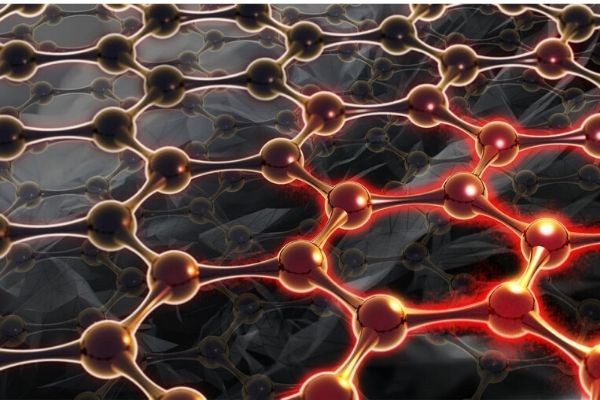
Among the most commonly used materials in various industries are graphite and graphene due to its resistance to high-temperature. The melting point of graphite has been examined for a long time, and many of these experiments have tested its melting point with consistency: Graphite's melting point is at 3,000 to 7,000 kelvins.
This high melting point makes it perfect for space-vehicles using graphite, as heat shields for re-entry into the earth's atmosphere. High heat resistance is one of its best characteristics, but how the heat variance happens is what is mostly unknown. Even using advanced computer models that try to find the best explanation, is not very consistent too.
All these computer simulations of graphite melting points were done, by physicists from Russia's MIPTIHPP. About 100 years of inconclusive results hope to be cleared up by these simulations. One discovery that came about is that graphite melting underwent sublimation. A chemical process that turns a solid into a gas, bypassing transforming into liquid form. Just like water that shrinks when it freezes into small cubes inside a fridge.
Next is a series of observations as scientists working on the mystery of graphite's high-temperature resistance.
a. An unexpected finding is discovered about all the models used to explain graphite behavior at hot temperatures. All these generated models were all spot on and to be accurate as well, researchers kept testing to reach this conclusion. All the expected theoretical results, and the unexpected overlaps during testing could tie-up all experimental data obtained.
b. Another method to find out more about graphite's behavior to match predictions related to it. These two means are classical molecular dynamics and ab initio molecular dynamics that account for quantum effects, for better accuracy too. A disadvantage is a small number of atoms are measured with short time variances. Examining the results from prior studies might give a concrete answer to the nature of graphite.
c. Current results from experiments done today show that the liquid carbon structure of the material only shifts when the heat is above the melting point of graphite. It proves that melting does have a limit, as predicted and accounts for the changing structure of liquid when the heat is applied to it.
d. Next is how graphene melts and what is unknown about it. Tests to find out how it will react to extreme melting points are crucial to know. Predictions have outlined the highest temperature to melt graphene should be 4,500 or 4,900 Kelvin. A material like this with two-dimensional carbon is considered the highest melting point for any substance, whether natural or man-made.
e. One result from the study is that when graphene melts, it will form linear chains. These structures are going to phase from solid to gas directly without a mid-phase. By this sublimation process, it can be used many materials that are low-dimensional as well. Like direct printing into any base, to be used like electronics and even medicines.
These studies show a comparison of how both graphite and graphene have both high melting temperatures. More is needed to examine both and see their full potential as sublimation phase material in technology and medicinal use.
Related Article: Graphene Surprises Researchers Again: Strange 'Melting' Behavior
© 2025 ScienceTimes.com All rights reserved. Do not reproduce without permission. The window to the world of Science Times.











